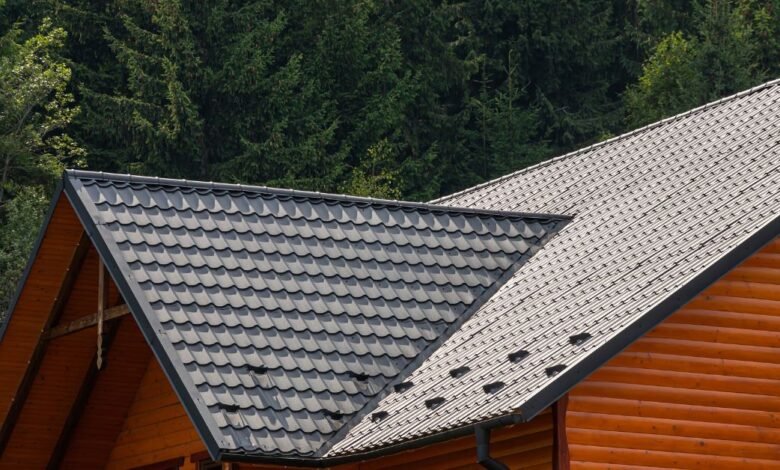Metal Wall Panels and Advanced Insulation Techniques for Sustainable Metal Buildings

Introduction
Metal buildings have gained significant popularity in the construction industry due to their durability, cost-effectiveness, and versatility. However, ensuring energy efficiency and climate control within these structures poses unique challenges. In response, architects and builders are turning to innovative solutions such as metal wall panels and advanced insulation techniques to create sustainable metal buildings that meet both functional and environmental goals.
Understanding the Role of Metal Wall Panels
Metal Wall Panels: Aesthetic Appeal and Structural Integrity
Metal wall panels play a crucial role in the construction of modern metal buildings. Beyond their aesthetic appeal, these panels provide structural integrity, weather resistance, and contribute to the overall energy efficiency of the building. Their sleek design and customizable options make them a preferred choice for architects seeking a contemporary and sustainable look.
Energy Efficiency Challenges in Metal Buildings
The Need for Efficient Insulation in Metal Buildings
One of the primary challenges in metal buildings is maintaining a comfortable interior temperature throughout the year. Metal, being a highly conductive material, tends to transfer heat rapidly, leading to higher energy consumption for heating and cooling. This issue has prompted the need for efficient insulation in metal buildings.
Advanced Insulation Techniques
Spray Foam Insulation: Sealing the Gaps
Spray foam insulation has emerged as a leading solution for insulating metal buildings. Its unique application method allows it to fill gaps and spaces, creating a seamless barrier against air infiltration. This not only enhances energy efficiency but also provides additional structural strength. Spray foam insulation is particularly effective in metal buildings where traditional insulation methods may fall short.
Reflective Insulation: Managing Radiant Heat
Reflective insulation is designed to manage radiant heat, a common issue in metal buildings exposed to direct sunlight. This type of insulation reflects radiant heat away from the building, reducing the overall heat absorption. This, in turn, helps in maintaining a cooler interior, minimizing the need for excessive air conditioning. Reflective insulation is often used in combination with other insulation materials for optimal results.
Insulated Metal Panels: Combining Form and Function
Insulated metal panels (IMPs) have gained popularity for their dual functionality—providing both structural support and insulation. These panels consist of an insulating foam core sandwiched between two metal panels. IMPs offer a high level of thermal resistance, ensuring that the building remains energy-efficient. The seamless integration of insulation and structure also simplifies the construction process, saving time and resources.
Benefits of Metal Wall Panels and Advanced Insulation Techniques
Energy Efficiency: Reducing Environmental Impact
The combination of metal wall panels and advanced insulation techniques significantly enhances the energy efficiency of metal buildings. Reduced energy consumption not only lowers operational costs but also contributes to a smaller environmental footprint. As sustainability becomes a focal point in construction, these technologies align with the global push towards green building practices.
Cost Savings: Long-Term Investment
While the initial cost of incorporating metal wall panels and advanced insulation techniques may be higher than traditional methods, the long-term savings make them a wise investment. Lower energy bills, reduced maintenance costs, and improved durability contribute to the overall financial benefits of sustainable metal buildings.
Comfort and Productivity: Creating Ideal Indoor Environments
Effective insulation and energy-efficient design contribute to a comfortable indoor environment. Maintaining consistent temperatures year-round enhances occupant comfort and productivity. This is especially crucial in commercial and industrial metal buildings where employee well-being directly impacts performance.
Case Studies: Successful Implementations
Green Manufacturing Facility: A Showcase of Sustainability
A green manufacturing facility in [Location] serves as a testament to the success of integrating metal wall panels and advanced insulation techniques. The facility utilizes insulated metal panels for exterior walls, providing a seamless combination of insulation and structural support. The result is a building that maintains optimal temperatures without excessive reliance on heating or cooling systems, leading to substantial energy savings.
Commercial Office Space: Balancing Comfort and Design
In the heart of [City], a commercial office space showcases the aesthetic appeal of metal wall panels while prioritizing energy efficiency. Reflective insulation, strategically placed, prevents radiant heat absorption, ensuring a comfortable working environment for employees. The integration of sustainable design elements has also earned the building recognition for its commitment to environmental responsibility.
Future Trends and Innovations
Technological Advancements in Insulation Materials
As technology continues to advance, so do the materials used in insulation. Future trends may see the development of even more efficient and sustainable insulation materials, further improving the energy performance of metal buildings. Innovations such as smart insulation systems that respond to environmental conditions could become integral components of the next generation of sustainable buildings.
Integration of Renewable Energy Sources
The future of sustainable metal buildings may involve a greater integration of renewable energy sources. Solar panels integrated into metal roofing systems and walls could contribute to the energy needs of the building, further reducing reliance on traditional power sources. This holistic approach aligns with the broader goal of creating buildings that generate their energy and minimize their impact on the grid.
Conclusion
Metal wall panels and advanced insulation techniques represent a dynamic synergy between aesthetics, functionality, and sustainability in the construction insulation of metal buildings. As the demand for energy-efficient structures continues to grow, these innovative solutions are poised to play a pivotal role in shaping the future of construction. From reducing environmental impact to enhancing occupant comfort, the benefits of embracing metal wall panels and advanced insulation techniques are not only immediate but also contribute to a more sustainable and resilient built environment. As architects, builders, and manufacturers continue to push the boundaries of what is possible, the journey towards greener, more efficient metal buildings promises to be an exciting and transformative one.


